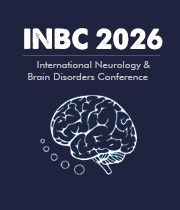Neurotransmitters and cell signaling
Neurotransmitters act as chemical messengers that are released from neurons in order to communicate with other cells. These neurotransmitters can activate several signaling pathways within the body that ultimately lead to a variety of cellular responses. Essentially, the release of neurotransmitters serves as an intercellular communication mechanism between neurons and other cells. Neurons produce several types of neurotransmitters, all of which can act on cell surface receptors that are specific to a particular type of neurotransmitter. Once the receptor detects a neurotransmitter, it triggers a chain of events inside the cell known as signal transduction, which involves relaying the message from the neurotransmitter to the target cell. Some of the most widely studied neurotransmitters include acetylcholine, norepinephrine, serotonin and dopamine. Signaling can be thought of as a highly-orchestrated collaboration between neurons and other cells in order to relay information within the body. For example, when dopamine is released from a neuron it binds to specific receptors on the surface of another cell that then activates other mechanisms within the cell that can alter the cell’s behavior. This communication network is essential for normal physiological function, especially in the brain and the nervous system. The neurotransmitters and their respective receptors are exquisitely regulated, and the existence of defects in neurotransmitter systems can lead to numerous medical conditions, such as depression, Parkinson’s disease, and Alzheimer’s disease. Many drugs on the market today are designed to target specific neurotransmitters, such as selective serotonin re-uptake inhibitors (SSRI), which are commonly used to treat depression. By understanding the physiological mechanisms surrounding neurotransmitter release, scientists can continue to uncover new treatments for neuropsychiatric disorders.

Joe Sam Robinson
Mercer University, United States
Robert B Slocum
University of Kentucky HealthCare, United States
George Diaz
Memorial Healthcare Systems, United States
Daniel Curry
Texas Children’s Hospital, United States
Zhenhuan Liu
Guangzhou University Chinese Medicine, China
Kiran Ghotra
Lake Erie College of Osteopathic Medicine, United States




Title : Atypical presentation of Juvenile myoclonic epilepsy in a 16-year-old female: A Case Report
George Diaz, Memorial Healthcare Systems, United States
Title : What we don’t know about hydrocephalus and It’s management
Daniel Curry, Texas Children’s Hospital, United States
Title : Artificial intelligence-driven DWI and FLAIR for the detection of early stroke changes: A systematic review
Shari L Guerra, The Medical City, Philippines
Title : Mapping neuroplasticity in occupational therapy: Evidence-based interventions with measurable neural outcomes
Jessica Marchant, Texas Woman's University, United States
Title : Non-pharmacologic management of orthostatic hypotension in inpatient rehabilitation: A quality improvement initiative
Laura Steakin, Rehabilitation Institute at Sinai, United States
Title : Non-pharmacologic management of orthostatic hypotension in inpatient rehabilitation: A quality improvement initiative
Mackenzie Weber, Rehabilitation Institute at Sinai, United States